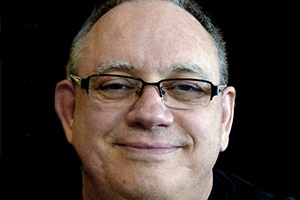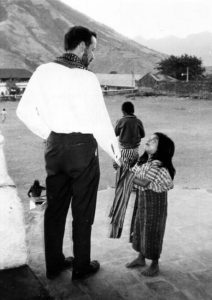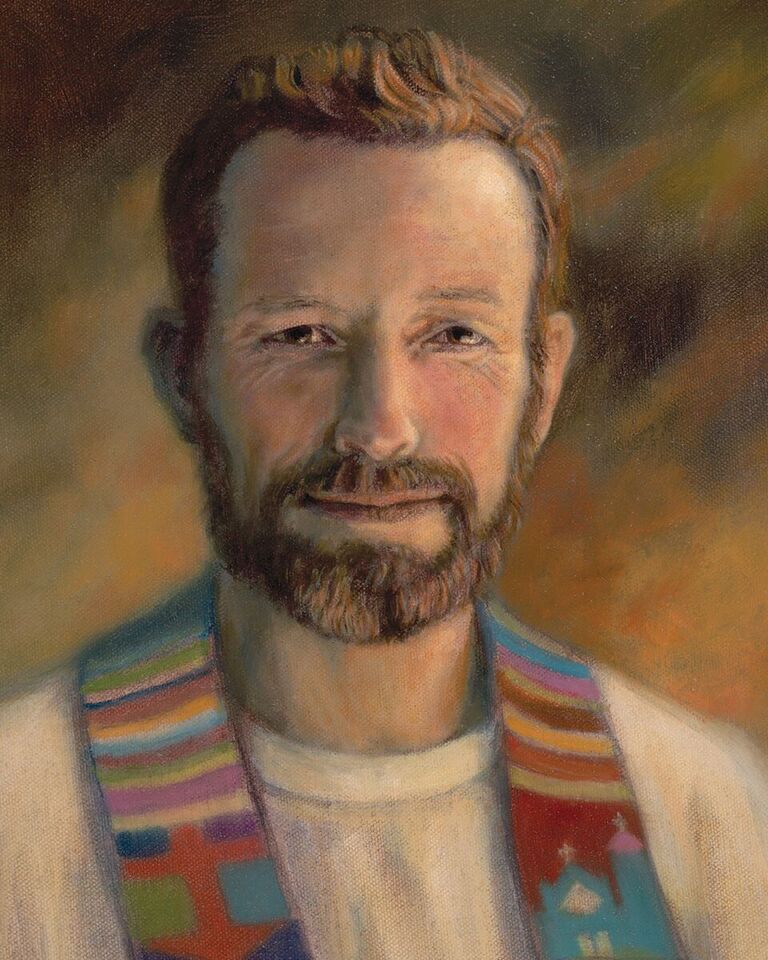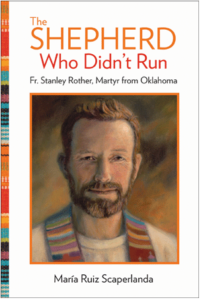My first offering in this new year is a biography about a martyr, Fr. Stanley Rother, and is titled: “The Shepherd Who Didn’t Run,” by María Ruiz Scaperlanda. Although it was published in December 2015, it remains relevant with Pope Francis formally recognizing Fr. Rother’s martyrdom last month, allowing his cause for canonization to move forward.

While I tell my writing students that titles are important and need to “grab”, this one just tells it like it is. The book has all the makings of a good movie, however: a normal, average, mundane, All-American boy from the heartland, struggles to become a priest, overcomes adversity, triumphs, answers the Church’s call for missionaries in Central America, goes to Guatemala, serves the people with great joy, is caught up in the political turmoil so common to Central America, returns to America, is told not to come back or he will die, returns to Guatemala anyway, and is martyred for the faith.
Lights, camera, action!
‘The Shepherd Who Didn’t Run’
Author: María Ruiz Scaperlanda
Publisher: Our Sunday Visitor
Length: 255 pages
Release Date: Dec. 2, 2015
Website: osv.com
Available at: Kino Library
This story, of course, is about more than just Fr. Stanley Rother from Oklahoma; it’s about German migrants braving the new world and the unknown, building families, communities, and Church, and leaving a legacy to inspire us all. Fr. Stanley Rother turns out to be the cog in the American Catholic dream and his story is all our stories.
The story itself begins in the 1960s but tells us of the German migrants and the zeitgeist from which Fr. Stanley was born: hard work, honesty, integrity, things that seem so elusive to us today. Fr. Stanley was first and foremost, a farmer; he was destined to be a farmer, especially since his academic work was average on a good day. He had a knack for mechanical things and learned to drive a tractor when he was only 10 years old. In high school, he began to discover the deep sense of Catholicism that ran throughout his family and community, how everything was tied to it and he yearned to pursue a holy vocation.
His seminary years were unremarkable. He struggled with several subjects and pushed forward, finally being ordained.
Fr. Stanley’s first assignments as a priest had him tasked with clearing land for a diocesan retreat center and then working with Native Americans in Oklahoma. He was keenly aware of the difference and designations of the tribes and this suited the people he worked with.
In 1960, Pope John XXIII requested help from the people of North America to the people of Central America, both lay and clerical. In 1963, however, when Fr. Stanley was ordained, he was not eligible to do missionary work, but by 1968, by the time the Diocese of Oklahoma City and Tulsa established the Guatemalan mission, he was named to the team. In the fall of 1968, Fr. Stanley and Fr. Tom Stafford made the long trip to Santiago Atitlán, towing a rock picker on a trailer.

He began his mission to the indigenous Tz’utujil people. The team ultimately built a health clinic, a radio station, helped the people with farming and other infrastructure projects.
Underlying the work that the team did, however, was a difference of philosophy in the scope and purpose of the mission. One side wanted to teach the Tz’utujil all the proven American methods and the other wanted to simply address the needs of the Tz’utujil. In the community, the cultural divide became more pronounced between the indigenous people and the Ladinos, or Spanish-speaking white people who thought of themselves as superior.
The missionary team dwindled over the years as the result of the rising tensions in the culture and the deteriorating political situation that was sweeping all of Central and South America — oppressive fascist governments against leftist guerilla forces of every strain.
Fiscal assistance from the diocese also dropped off significantly.
The metaphorical axe fell when the Church chose to defend the people — and, by proxy, the leftists who fought on behalf of “the people” and the government became suspicious of the Church and the army moved in to suppress it, harassing the believers, clerics, and lay volunteers. The death threats that followed were enough to ensure eventual martyrdom.
As martyr books go, this one is close to home because many of us lived through those times and were aware of things that took place. Ultimately, the book is well-researched and well-written, and very readable.








